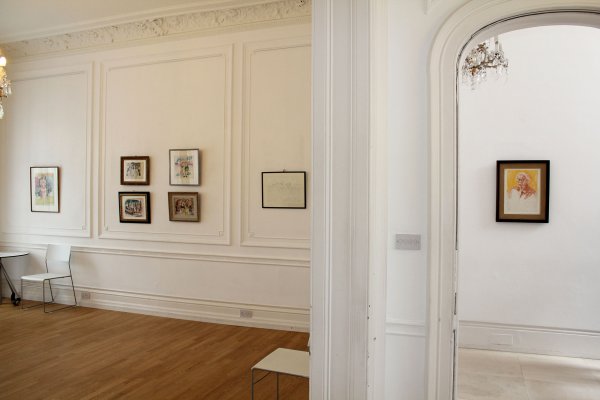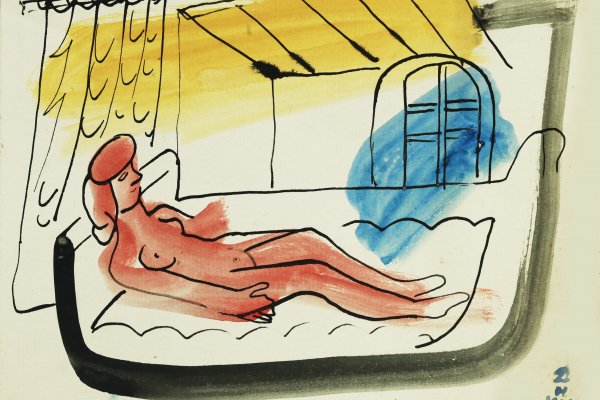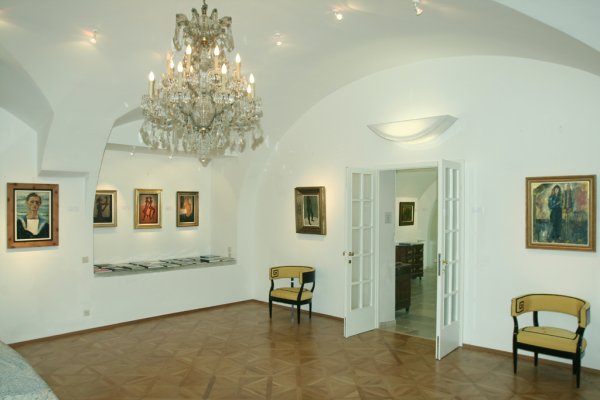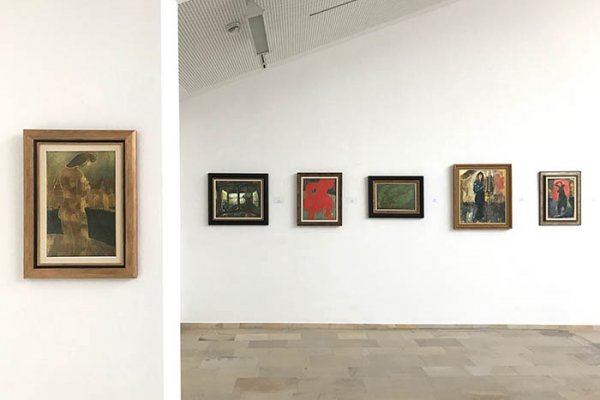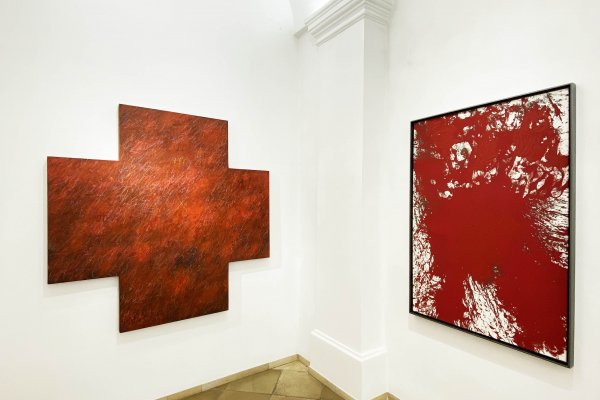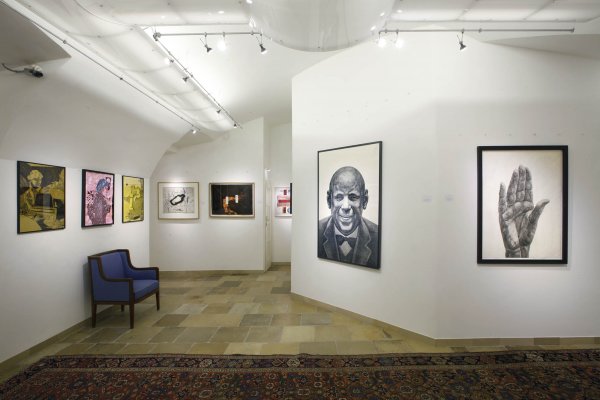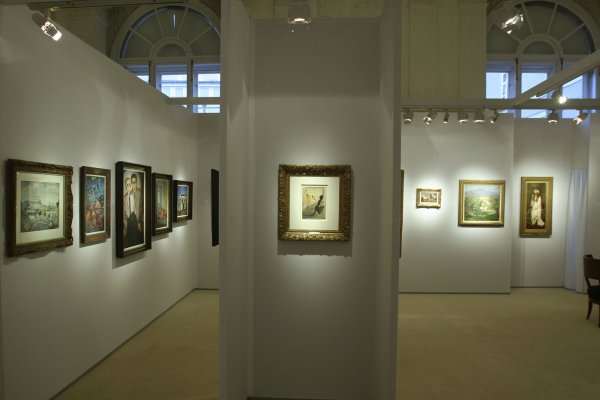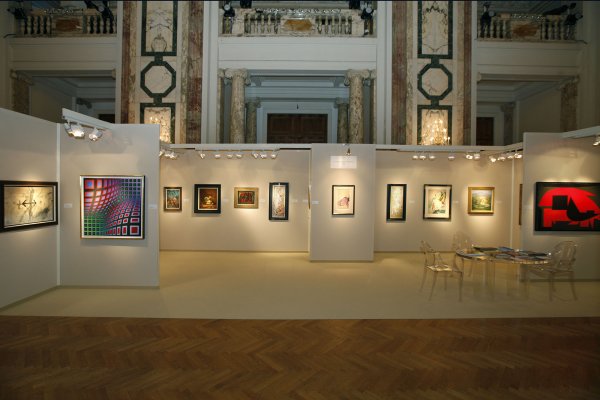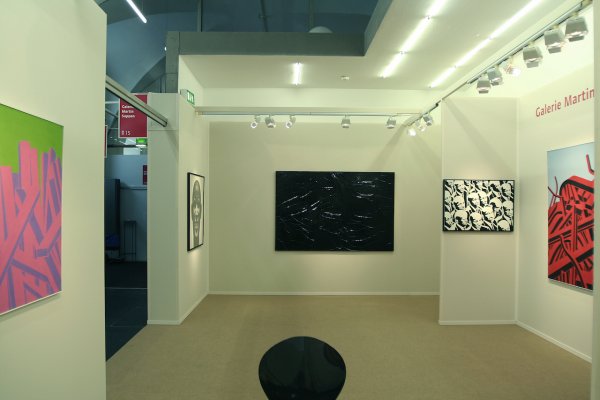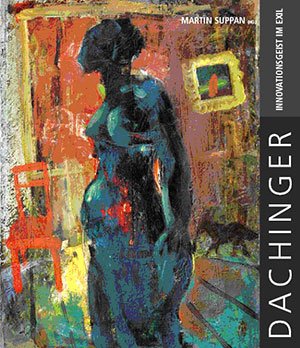Hugo Puck Dachinger
Hugo Puck Dachinger is a significant protagonist in the history of Austrian art. He played a pioneering role in exile art. In 1938, Dachinger escaped the Anschluss and came to London where he lived until his death in 1995. He is very well known for completing works and organizing the exhibition ‘Art Behind Barbed Wire’ during his internment on the Isle of Man as an enemy alien, which has led to his release and recognition as an artist. His works showed the hard and deprived lives of the internment camp and were painted on newspaper or wallpaper in the absence of painting utensils. Dachinger made the colors from plants and soil, white from toothpaste and brush from his own hair. With his fellow exiled artists he represented the idea of an international artistic language of modernism. He achieved great success during the war when he exhibited with artists such as Picasso, Kokoschka, Schwitters, Braque, Klee, Dufy, Ernst, De Chirico and more in West End Galleries.
Dachinger’s work is part of collections such as the Batliner Collection at the Albertina Museum but is also presented in the collections of English museums such as the Walker Art Gallery, Liverpool, the Manx National Heritage, Isle of Man and Ben Uri Museum, London - as part of the national heritage.
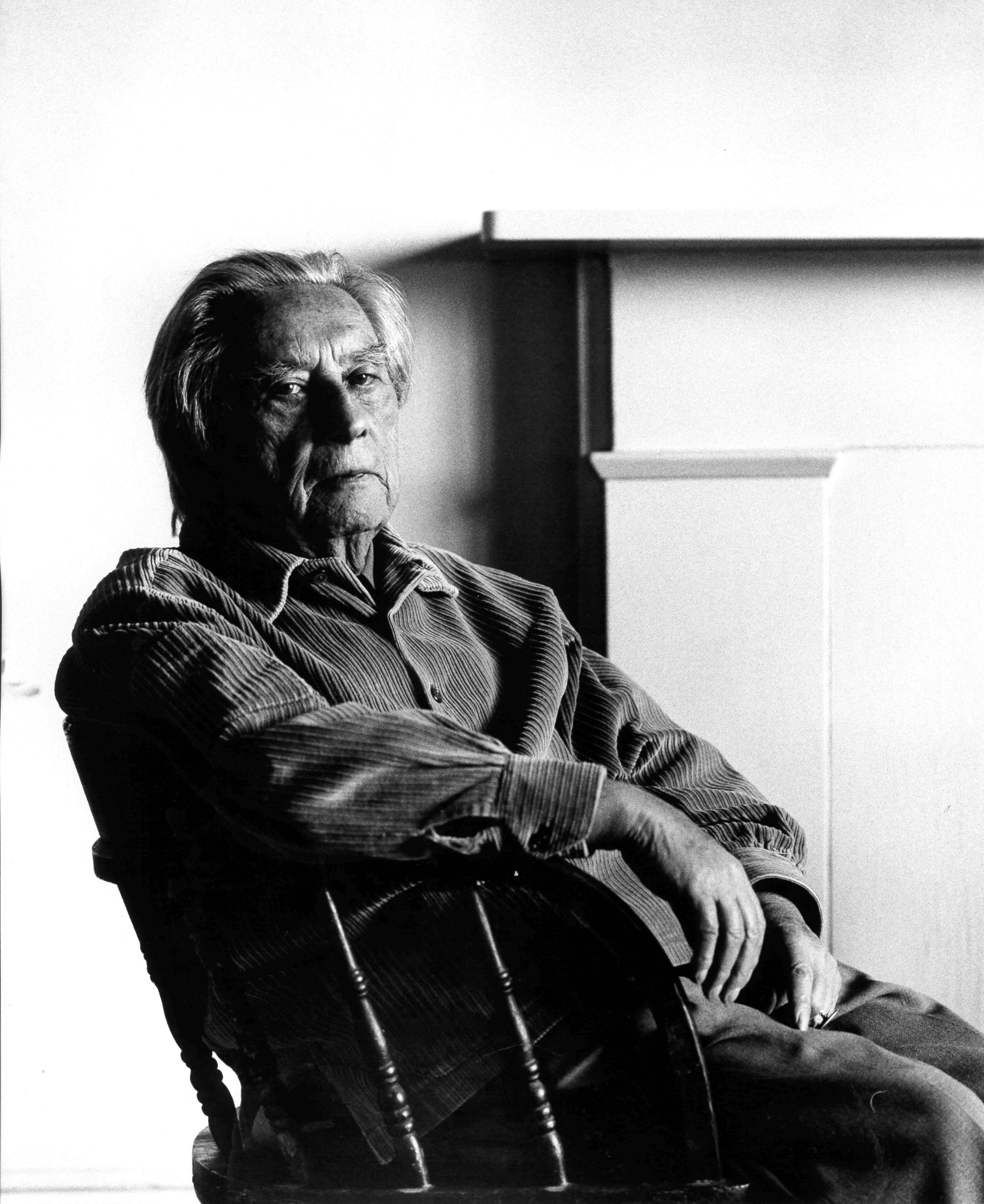
Works
-
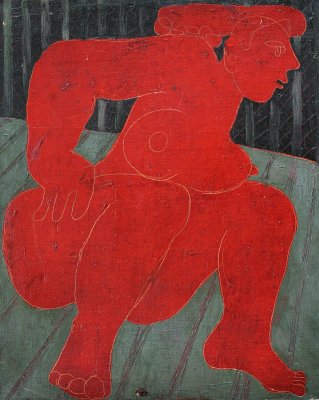
Hugo Puck Dachinger
Squtting Nude, around 1946
Oil on canvas
50,8 x 41 cm -
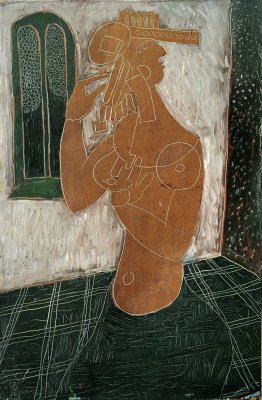
Hugo Puck Dachinger
Interior with Nude, 1946
Oil on painting cardboard
47,5 x 30,8 cm -
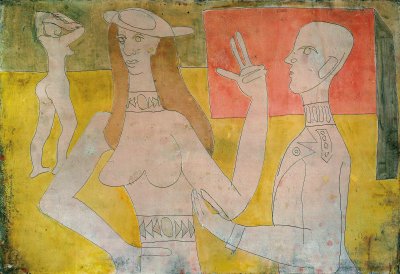
Hugo Puck Dachinger
Military Man Interested in Two Ladies, 1946
Oil on painting cardboard
29,7 x 44,2 cm -
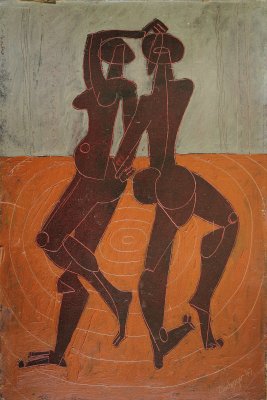
Hugo Puck Dachinger
The Dancers, 1947
Oil on painting cardboard
46,3 x 30,8 cm -
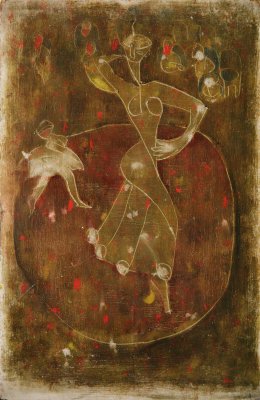
Hugo Puck Dachinger
Dancers with Audience, around 1942
Oil on painting cardboard
46,8 x 30,8 cm -
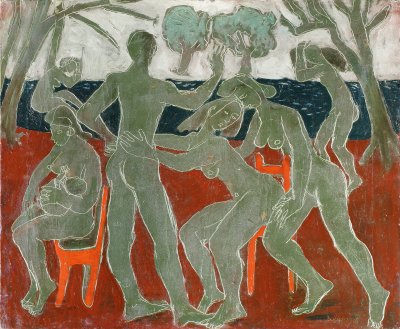
Hugo Puck Dachinger
Bathing Nudes, 1946
Oil on canvas
50,5 x 60,8 cm -
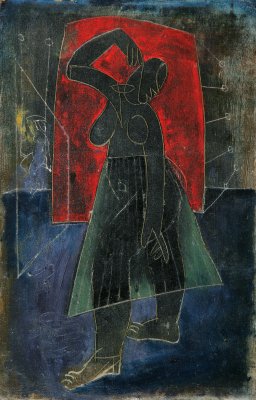
Hugo Puck Dachinger
Incised Figure with Diaphanous Skirt, 1947
Oil on painting cardboard
47,5 x 30,8 cm -
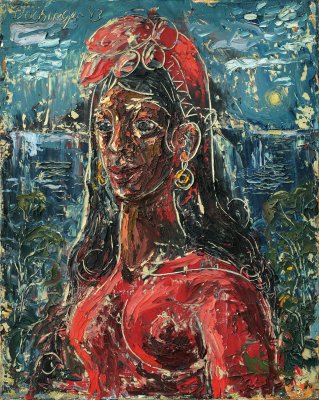
Hugo Puck Dachinger
Red Lady, 1943
Oil on canvas
50,7 x 40,5 cm -
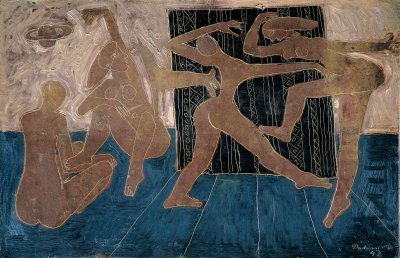
Hugo Puck Dachinger
Dancing Nudes with Dog, 1946
Oil on painting cardboard
31 x 47,5 cm -
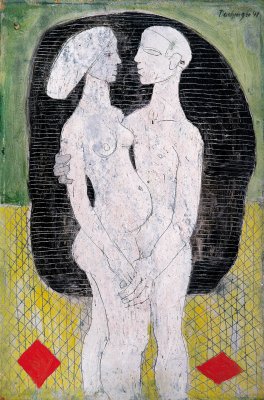
Hugo Puck Dachinger
Nude Couple, 1947
Oil on paining cardboard
47 x 31 cm -
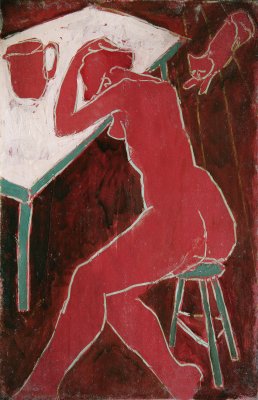
Hugo Puck Dachinger
Red Nude with Cat, around 1947
Oil on painting cardboard
48,5 x 31 cm -
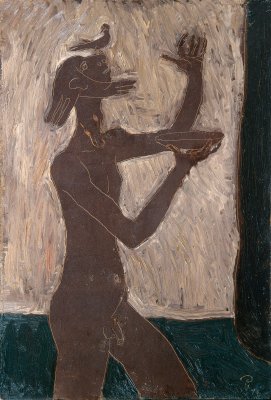
Hugo Puck Dachinger
Mythical Male with Bird, 1946
Oil on painting cardboard
44,5 x 30 cm -
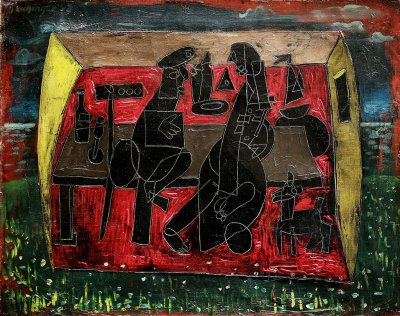
Hugo Puck Dachinger
One World in a Million, 1943
Oil on canvas
40,5 x 51 cm -
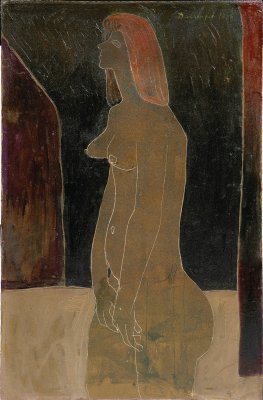
Hugo Puck Dachinger
Feeling of Color and Line, 1948
Oil on painting cardboard
47 x 31 cm -
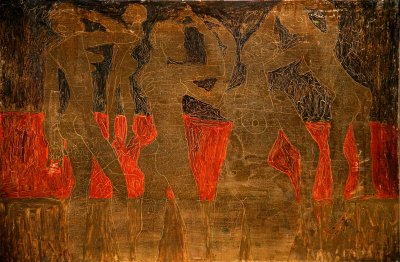
Hugo Puck Dachinger
Five Nudes Dancing, 1946
Oil on canvas
40,5 x 61 cm -
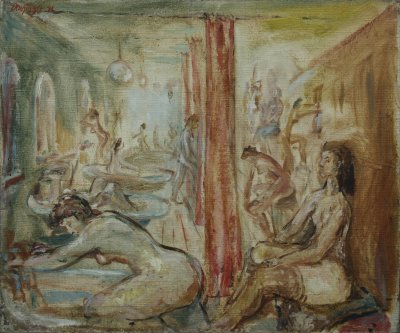
Hugo Puck Dachinger
Bathing Girls, 1942
Oil on canvas
63,5 x 76 cm -
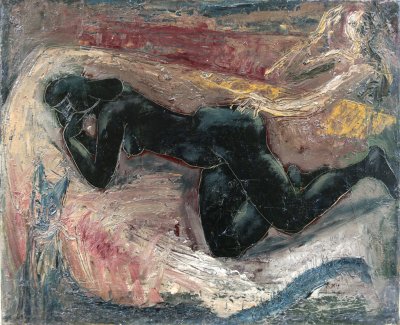
Hugo Puck Dachinger
Black Nude with Blue Cat, around 1944
Oil on canvas
40,5 x 51 cm -
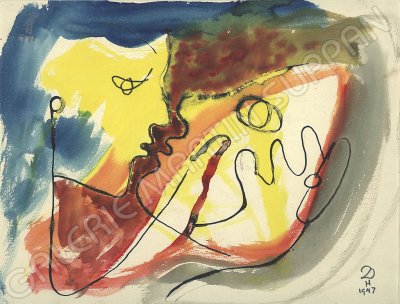
Hugo Puck Dachinger
Two Heads, 1947
Ink, watercolour on paper
19,5 x 25 cm -
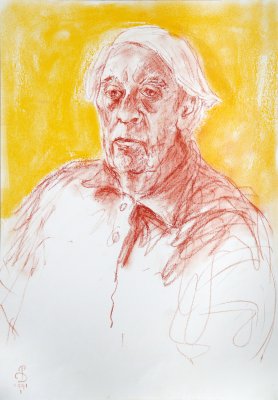
Hugo Puck Dachinger
Selbstbildnis, 1991
Pastel on paper
42 x 29,7 cm -
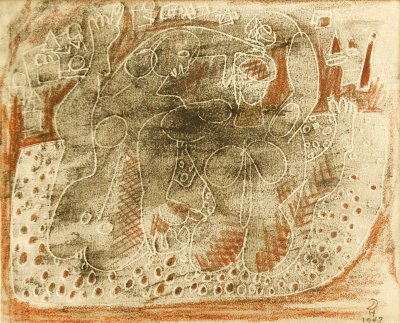
Hugo Puck Dachinger
Bathing Couple, 1942
Mixed media, white line technique on paper
15,8 x 19,6 cm -
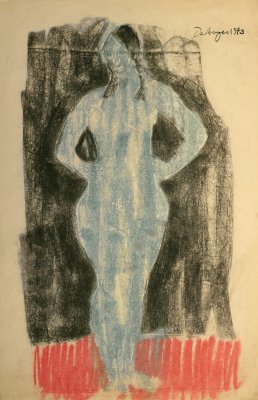
Hugo Puck Dachinger
Blue Nude on Black Ground, 1943
Pastel on paper
61 x 39,5 cm -
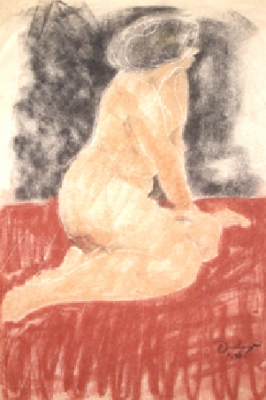
Hugo Puck Dachinger
Akt sitzend, 1946
Pastel on paper
58 x 39,5 cm -
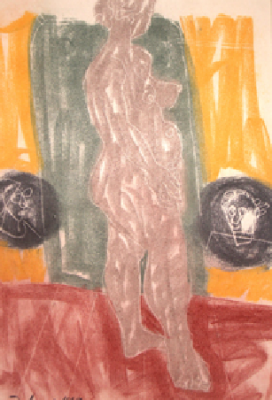
Hugo Puck Dachinger
Aktsaal (Stehender Akt und Medaillons), 1954
Pastel on paper
55,8 x 39,5 cm -
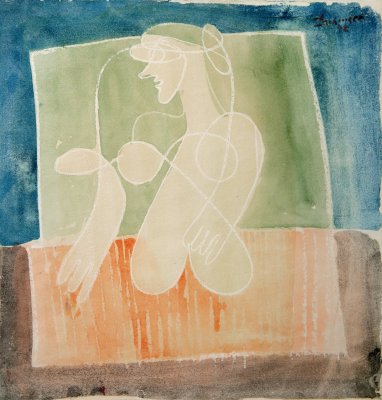
Hugo Puck Dachinger
Matter in Motion, 1942
Pastel on paper
26,5 x 25,8 cm -
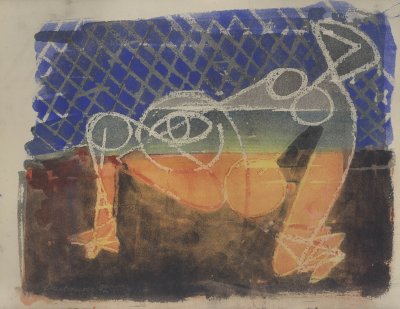
Hugo Puck Dachinger
Seeing Light and Form, 1942
Watercolour on paper
20,7 x 26,4 cm -
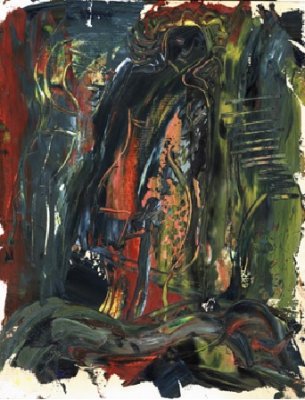
Hugo Puck Dachinger
Bathers, around 1946
Oil on paper
20,3 x 15,8 cm -
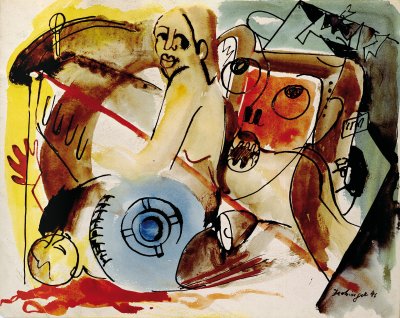
Hugo Puck Dachinger
Accident, 1941
Watercolour, ink on paper
20,2 x 25,2 cm -
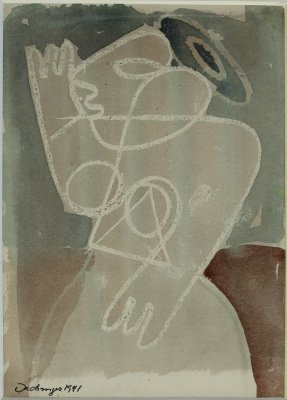
Hugo Puck Dachinger
Angel, 1941
Watercolour on paper
17,6 x 12,6 cm -
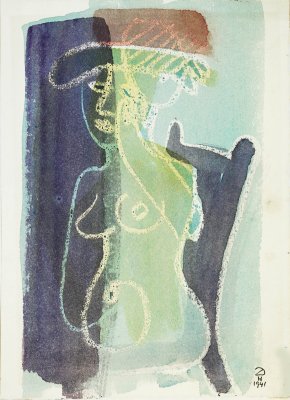
Hugo Puck Dachinger
Nude with Red Hat, 1941
Watercolour on paper
20,9 x 15,3 cm -
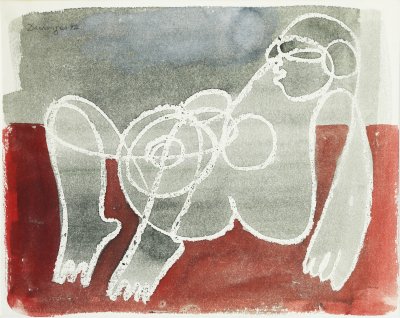
Hugo Puck Dachinger
Nude on Red Carpet, 1942
Watercolour on paper
21,8 x 16,9 cm -
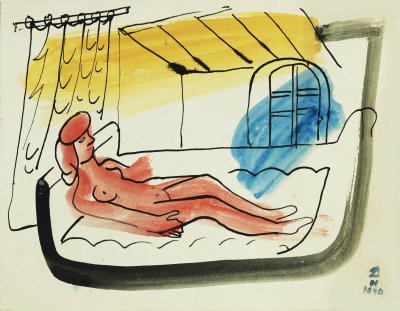
Hugo Puck Dachinger
Nude on a Sofa, 1940
Watercolour, ink on paper
15,3 x 20,3 cm -
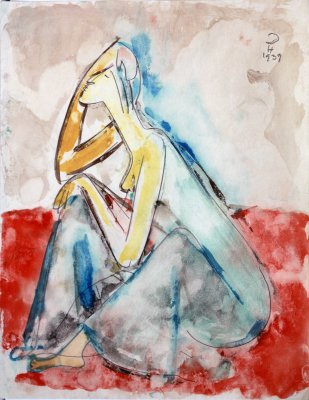
Hugo Puck Dachinger
Thinker, 1939
Pencil, watercolour on paper
28,3 x 22,5 cm -
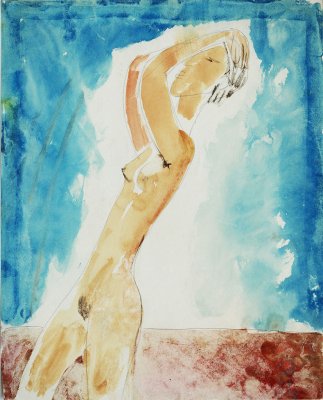
Hugo Puck Dachinger
Nude with Raised Arms, 1939
Watercolour on paper
28,3 x 22,4 cm -
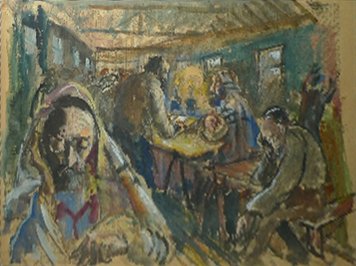
Hugo Puck Dachinger
Im Internierungslager für "Enemy Alien", 1940
Gouache on newspaper
48,3 x 63,4 cm -
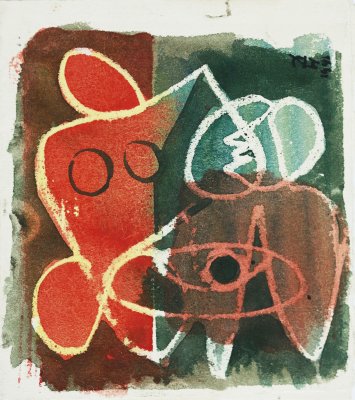
Hugo Puck Dachinger
Seated Couple, 1941
Watercolor on paper
12 x 10,5 cm -
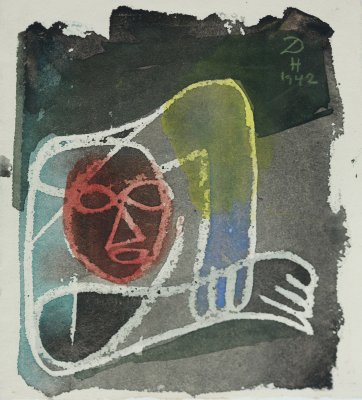
Hugo Puck Dachinger
An Sprawling, 1942
Watercolor on paper
12 x 10,7 cm -
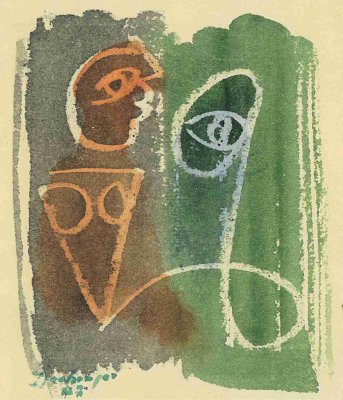
Hugo Puck Dachinger
o.T., 1942
Watercolor on paper
12 x 10,7 cm -
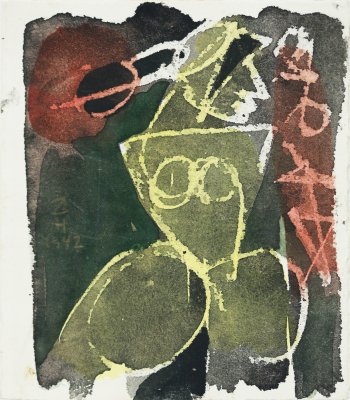
Hugo Puck Dachinger
Nude Looking Right, 1942
Watercolor on paper
10,9 x 10,5 cm -

Hugo Puck Dachinger
King I, 1942
Watercolor on paper
13,5 x 10,5 cm -
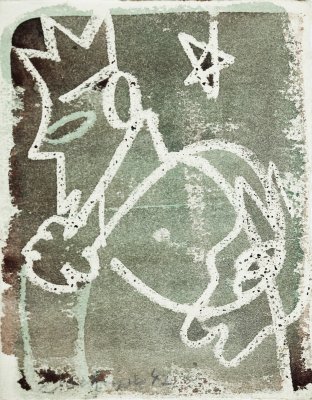
Hugo Puck Dachinger
King II (with Donkey), 1942
Watercolor on paper
13,5 x 10,5 cm -
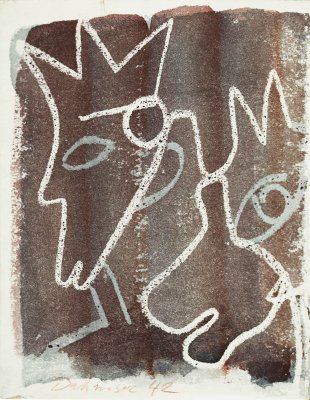
Hugo Puck Dachinger
King III (with Donkey), 1942
Watercolor on paper
13,4 x 10,5 cm -
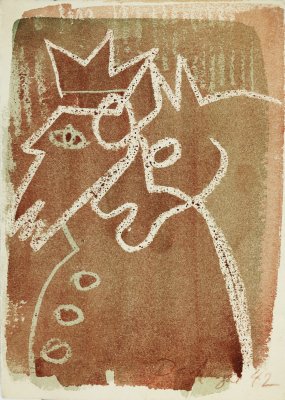
Hugo Puck Dachinger
Kind IV (with Horse), 1942
Watercolor on paper
18 x 13 cm

